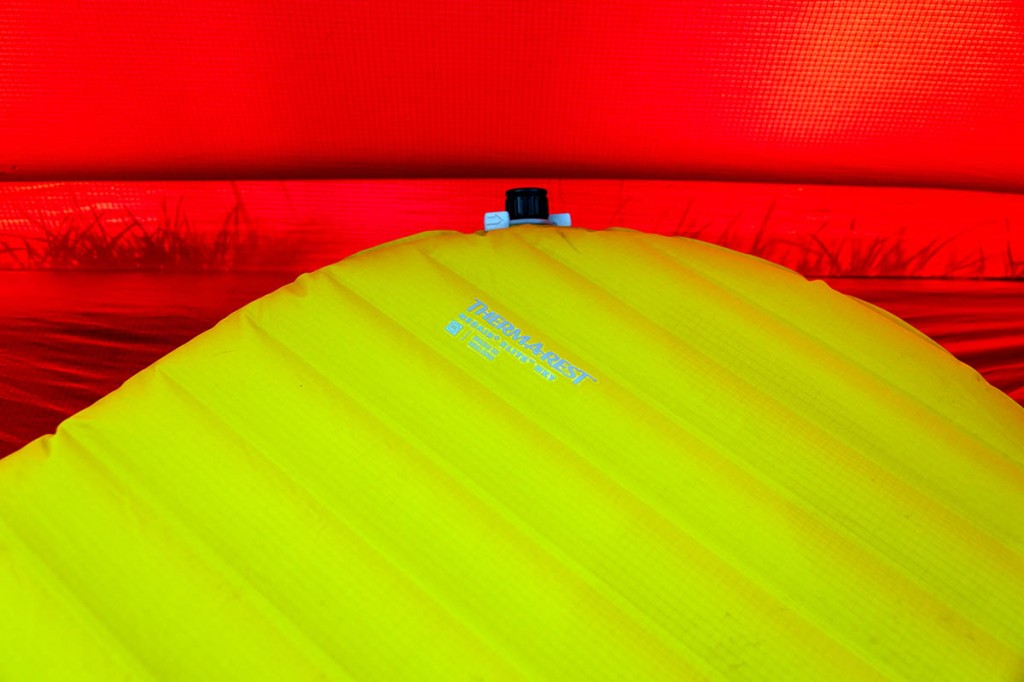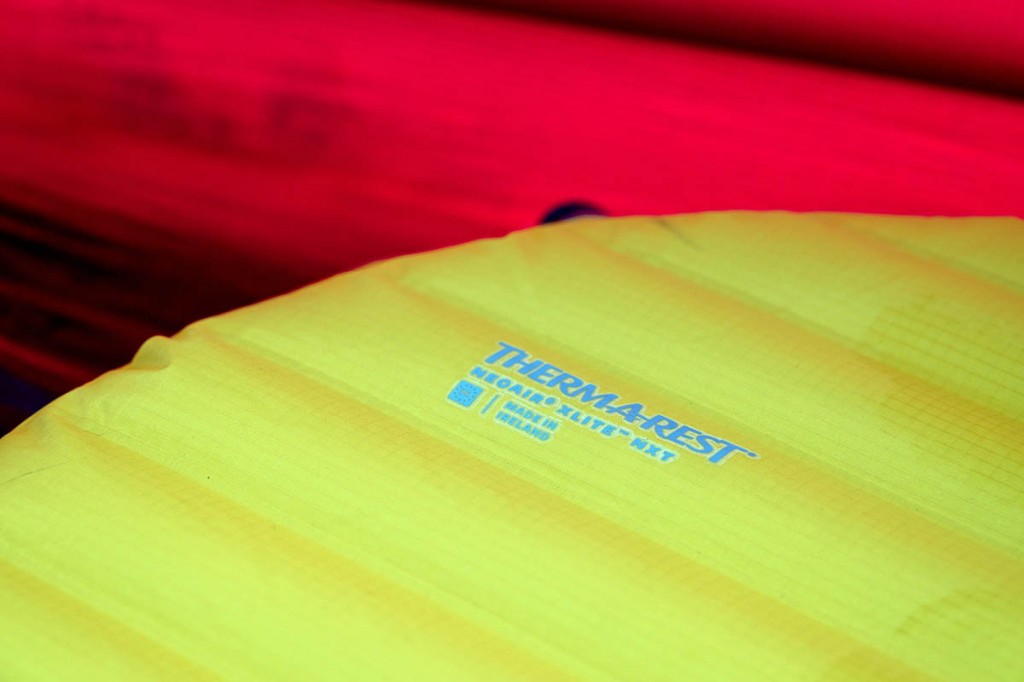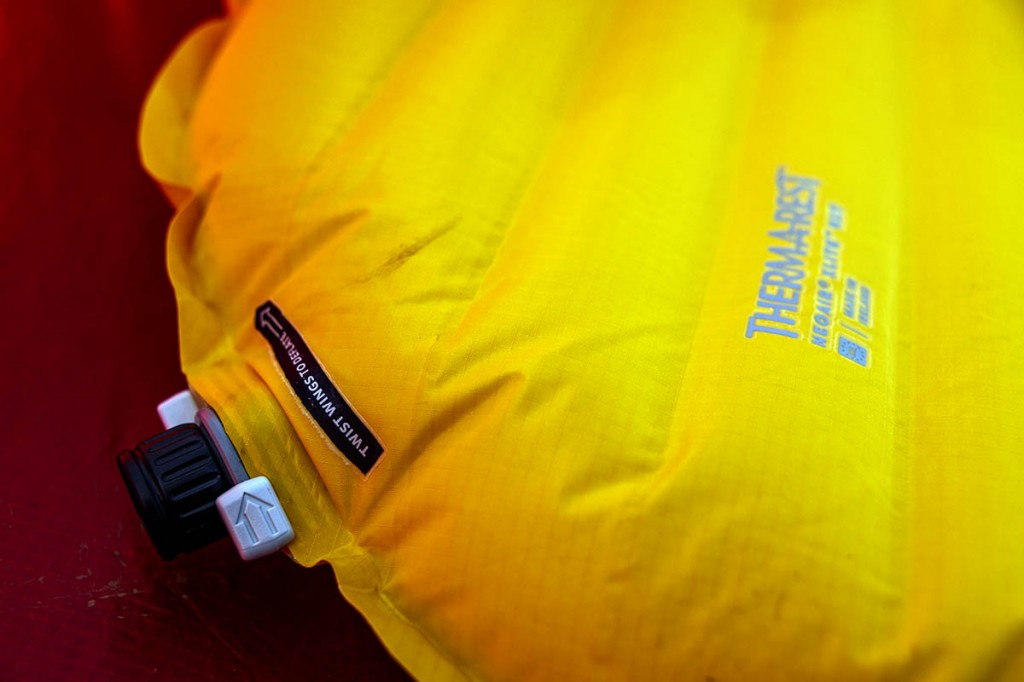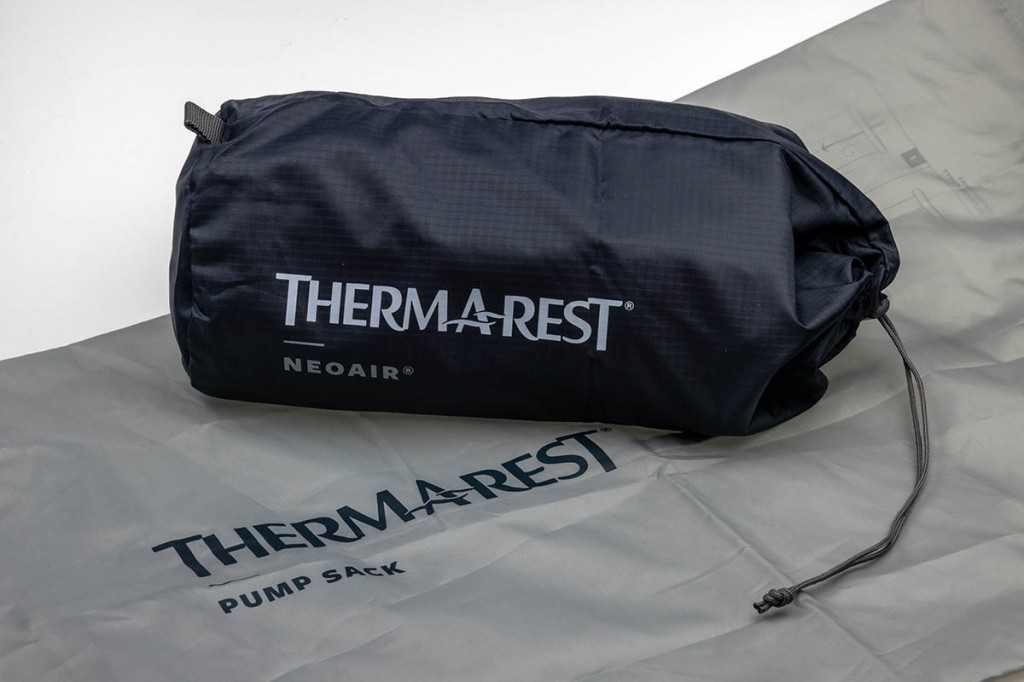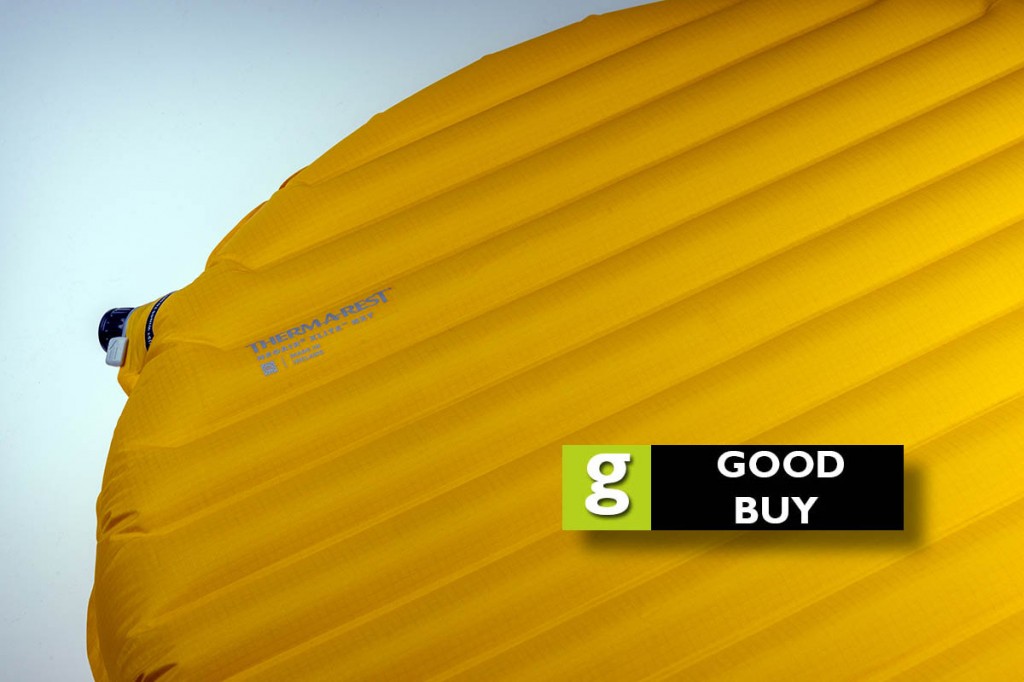Price: £210
Weight: 466g including sack
Country of manufacture: Ireland
Thermal insulation: R4.5
For me, the two most important aspects for a sleeping mat are the insulation it provides, and cushioning to allow as good a night’s sleep as possible in the tent.
The XLite provided a good amount of both, while having the advantage of packing down pretty small, with a low weight.
This made it great for lightweight camping trips, occupying less space in my rucksack and adding less than 500g to my load.
This Therm-a-Rest mat comes in a variety of sizes. I tested the regular size, which is 183cm (72in) long and 51cm (20in) wide at its shoulder level, tapering to 36cm (14in) at the foot end. I’m 5ft 8in (1.73m) tall, so the mat was fine in its length and just wide enough when on my back – the arms right on the edge of the mat. The XLite NXT also comes in a short, 168cm version of the regular model, with the same width. There’s also a wide regular version, 64cm wide and 183cm long, plus a large model, 196cm long and 64cm wide.
When fully inflated, the mat has a thickness of 7.6cm (3 in), which proved enough to support my 80kg weight comfortably, both while on my back and on my side.
The outer fabric of the mat is 30 denier nylon with a ripstop pattern. The baffles run laterally with 42 cells in my standard version. The material, which wasn’t too slippery, is the same on the top surface and the base.
One of the reasons the mat packs up small is because it doesn’t rely on foam for its insulation. Instead, its construction uses the brand’s Triangular Core Matrix, which isolates the top half of the pad from the lower part. The addition of reflective ThermaCapture elements enables the 4.5 R-value for warmth, pushing the rating into the lower end of the all-season category for insulation.
Therm-a-Rest also says its revised construction has reduced its noisiness by 83 per cent from its previous version. While there’s still some noise from the mat when shuffling about on it, I didn’t find this excessive – an important point if you’re sharing your tent with someone else.
The Therm-a-Rest Neoair Xlite NXT has the brand’s Wing Lock valve. This has two main parts: the inner conventional circular non-return valve and an outer pair of wings for deflating. To inflate the mat, you close the wings and open the inner valve and blow into it to inflate to the firmness you need. I tended to fully inflate the mat, which I found gave the best support and comfort, but you can put less air into it if you want a less firm feel. After inflating it, you close the valve by rotating it clockwise. The mat comes with a pump sack, which clicks firmly onto the valve housing. You then blow gently into it, roll up the open end and pump the trapped air into the mat. I found this slow and awkward to opertate within a small tent. If the weather’s dry and there’s a breeze, using this method outside the tent works better.
When it’s time to deflate, you open the inner valve and then rotate the pair of wings to fully open the valve, enabling the mat to be quickly rolled up. The supplied stuff sack was a good size that allowed the rolled mat to be inserted without difficulty. The stuff sack has a drawcord and spring toggle closure and also has small webbing loop if you want to hang it, using a carabiner or similar. When packed away, the Therm-a-Rest Neoair Xlite NXT measures 23 x 9cm, about the size of a standard 1 litre drinks bottle. Total weight, with the pump sack and stuff sack, is 466g. It also comes with a field repair kit – essential if you’re unfortunate to experience puncture while out on the trail.
In use, the insulation provided by this mat was noticeable, which is quite impressive for such a lightweight and small pad. Previous versions, if reports are to be believed were very noisy with a crackly sound with even small movements, but I found this model acceptable in the amount of rustle when moving about on it.
The width was just enough, but only because I tend to sleep on my side, so if you think that might be an annoyance, it’s worth considering the wider version, though that involves extra cost. The Therm-a-Rest Neoair Xlite NXT is pretty pricey anyway, but if you’re a committed backpacker and camper, it represents a good investment. Certainly, for multi-day walks and backpacking expeditions, the small packed size and light weight are a boon. I’m a cold sleeper, so it’s important to remember that your overall warmth overnight will be dependent not just on how well your sleeping bag keeps in your body heat, but also how well your sleep mat insulates you from the cold ground. I definitely felt warmer using the Therm-a-Rest Neoair Xlite NXT than with my previous mat.
The Neoair XLite is made in Ireland, so bringing it to the UK involves fewer transport miles than one made in east or south Asia. Therm-a-Rest’s parent company Cascade Designs has a pretty comprehensive sustainability policy. It has set a target of reducing its greenhouse gas emissions by 45 per cent by 2030, compared to 2021, and aims to be carbon neutral by 2050.
It says its products have good durability and it operates a repair team, whose feedback from items received are passed on to designers to enable intelligent decisions on future product development. It says it is working towards removing PFC chemicals from all its durable water repellent treatments by 2030. It operates a supplier code of conduct covering, among other things, workers’ rights and environmental management.
Best uses: backpacking; multi-day walking; lightweight camping; ultra- and endurance running.
Performance 36/40
Comfort 25/30
Quality 8/10
Value for money 6/10
Sustainability 7/10
Total score: 82/100
